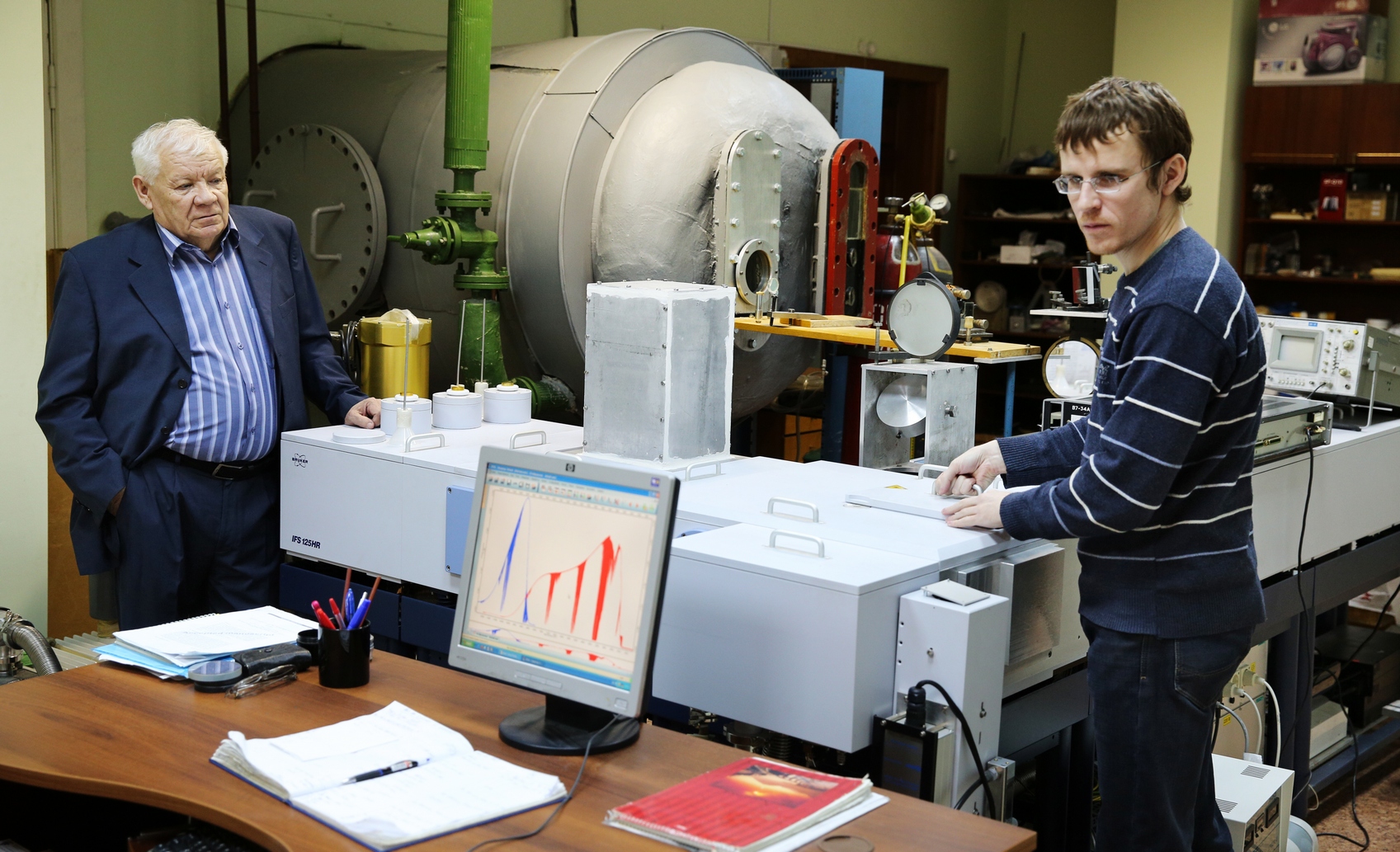Centre for Fundamental and Mathematical Physics
The Centre organizes research in theoretical physics, high energies, theory of condensed matter, theoretical optics, and mathematical physics.
The Centre trains experts in promising areas of theoretical physics (quantum and classical field theory, quantum and classical mechanics, mathematical problems of physics, theory of condensed matter, theoretical optics) and interdisciplinary fields (physics of nanosystems, biophysics, mathematical modeling in biology, and mathematical models in economics).
Heads of the Centre
Georgy Mayer, Professor, President of the National Research Tomsk State University
Vladislav Bagrov, Professor, National Research Tomsk State University
Olga Chaikovskaya, Professor, National Research Tomsk State University
Laboratories of the Centre
Laboratory for Theoretical and Mathematical Physics
Development of new methods of theoretical and mathematical physics and their application to the current problems of quantum field theory, particle physics, gravity, cosmology, and condensed matter physics.
Research outcomes:
– Complexes of new methods of construction, research and quantization of gauge theories that are relevant in the context of the development of modern high-energy physics;
– New knowledge concerning the structure and properties of fundamental interactions and physical processes in semiconductor crystals and nanostructures.
Laboratory for Quantum Mechanics and Molecular Radiation Processes
Development of a special area of quantum theory: quantum theory of intense fields, and its subsections: quantum theory of intense fields with unstable vacuum; theory of relativistic radiation; kinetics of processes in complex quantum systems; dynamics of complex molecular systems.
Research outcomes:
– Developed mathematical apparatus of quantum theory of intense fields with unstable vacuum;
– Identification of features of the synchrotron radiation of charged particles at extreme values of the physical parameters (ultrahigh energies of particles, abnormally high density of external magnetic field, strong gravitation);
– Conducting research by the methods of quantum dynamics on the evolution of populations, living systems, and systems with nonlinear interactions;
– Development of methods for calculating the spectra of complex molecular systems.

Laboratory for Molecular Photophysics and Photochemistry
Complex experimental and theoretical research on the electronic structure and physical and chemical properties of organic molecules and molecular complexes.
Research outcomes:
– Spectrums of absorption, luminescence, and luminescence excitation of selected classes of organic compounds. The rate constants and quantum yields of photoprocesses. The lifetimes of long-lived radiation in liquid and frozen solutions;
– Electronic spectra, quantum yields of photoprocesses and laser radiation with the intermolecular interactions in various phase states;
– Calculated by quantum-chemical methods, a scheme of electronic states of molecules, rate constants and quantum yields of photophysical processes, electronic structure and electron density distribution;
– Experimental and theoretical evaluation of acid-base properties in different electronic states of molecules;
– Photochemical properties of the compounds. Laser characteristics of the medium on the basis of studied compounds;
– Patterns "structure – property".
Laboratory for Quantum Mechanics and Molecular Radiation Processes
Modeling physical and chemical properties, highly excited quantum states of molecules and radiation processes for application in nonlinear dynamics, spectroscopy, remote analysis, atmospheric optics, astrophysics, chemistry, biophysics, and ecology.
Research outcomes:
The research group published calculations of potential energy surfaces of small and polyatomic molecules. The group developed algorithms for calculating the spectra of the calculated energy surface and dipole moment. A computer implementation of the method of contact transformations for polyatomic molecules of different types has also been developed. On the basis of the proposed model the group conducted theoretical research on the photophysical properties of a wide number of organic molecules for applications in photonics and organic electronics. The laboratory conducted research on magnetic properties of heteroporphyrin and isoflurane molecules, and theoretical research on the photophysical properties of porphyrin and some of its derivatives and complexes with lutetium, and new zinc metalorganic complexes.
Laboratories
Office 226,
1 Novosobornaya Sq.,
Tomsk (SPhTI)
Phone: +7 3822 529-640
Office 128, SPhTI
1, Novosobornaya Sq., Tomsk, 634050, Russia
Phone: +7 (3822) 529-021
Latest News
Contacts
- chon@phys.tsu.ru
- 634050, Russia, Tomsk, Lenina av., 36

